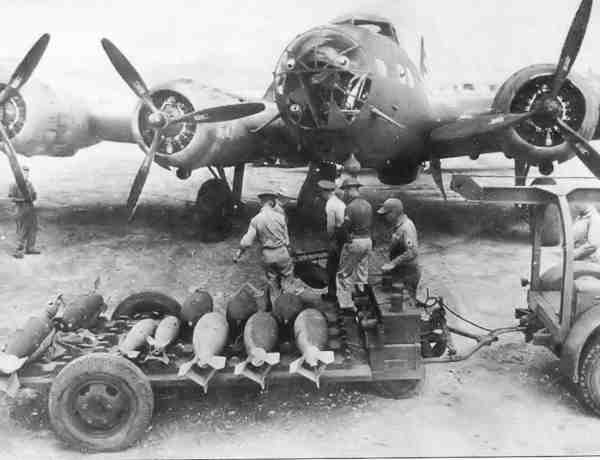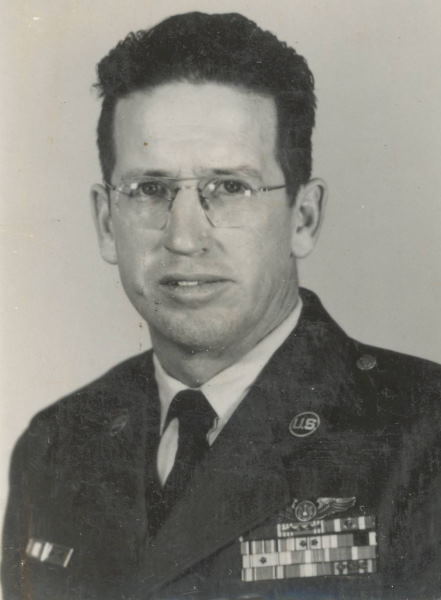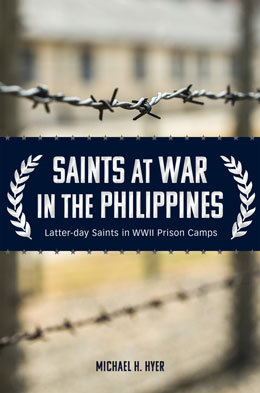Del Monte
Though deep’ning trials throng your way,
Press on, press on, ye Saints of God!
—Eliza R. Snow, “Though Deepening Trials”
Although war had reached the Philippines on December 8, 1941, it did not arrive at Del Monte until sometime later. The Japanese landed a small force at Davao on the southern island of Mindanao in late December, but the decisive battles for the Philippines were fought farther north on Luzon. The immediate capture of the southern island of Mindanao was not part of the Japanese plans and, with the Japanese lacking the troops to conduct operations simultaneously in both areas, Mindanao was largely safe from any large invasion force in the early months of the conflict.
Nevertheless, it was a very busy time for the Fifth Air Base group. With the destruction of Clark Airfield on Luzon, Del Monte Airfield on Mindanao became the center of what remained of US air power in the Philippines. Like those on Luzon, these air corpsmen found themselves at war without adequate equipment, spare parts, weapons, and ammunition, but they resourcefully made the best of what they had.[1]
In addition to maintaining aircraft that continued to fly missions from Del Monte, the corpsmen set about to improve their defenses. Although lacking effective antiaircraft guns, the airfield had machine guns placed at its corners. Private Allen C. Christensen and his Latter-day Saint friend Private Woodrow Dunkley from Franklin, Idaho, were members of a crew assigned to these guns.[2]
While the Japanese had not yet invaded the island in force, small contingents of Japanese troops had landed on the island, and American soldiers conducted reconnaissance patrols to identify the Japanese positions. Private First Class Rex D. Bray, a Latter-day Saint air corpsman from Provo, Utah, led patrols of Filipino and Moro soldiers on two-week long reconnaissance missions into the jungle, searching out Japanese.[3]
Following the outbreak of war on Luzon, those on Mindanao were left without a source of food supplies. Private First Class Charles L. Goodliffe, a Latter-day Saint soldier from Box Elder County, Utah, together with others in the quartermaster group, implemented a system to buy eggs, poultry, vegetables, and other foods from the local Filipinos. The best source of food was in Moro country. The locals, however, advised the corpsmen against going there because the Moros were reportedly headhunters who would “just lop off their head with a bolo knife.” Goodliffe and two others went anyway, although not without some trepidation. They managed to gain the trust of the Moros, and the Moros became the army’s largest supplier of foodstuffs.[4]
Since the bombers based at Clark Airfield on the island of Luzon were within reach of Japanese bombers in Taiwan (Formosa), General MacArthur’s plan had been to move all the bombers at Clark Airfield to Del Monte. However, only a few bombers made it to Del Monte, because the rest were destroyed in the bombing of Clark Airfield.[5] The few bombers moved to Del Monte continued to fly combat missions, but they mostly just flew from one base to another to avoid being bombed on the ground by the Japanese. Without any replacement parts and with the aircraft mechanics having only limited tools, the corpsmen struggled to keep the bombers operational.[6] Moreover, Del Monte did not have adequate defenses, and it was only a matter of time before the base would be discovered and bombed by the Japanese.[7]
 Flying Fortress being loaded with 100- and 500-pound bombs at Del Monte Field, Mindanao, Philippines, where the Fifth Air Base group from Utah was based in 1942. Courtesy of the United States Air Force. USAF Historical Research Agency.
Flying Fortress being loaded with 100- and 500-pound bombs at Del Monte Field, Mindanao, Philippines, where the Fifth Air Base group from Utah was based in 1942. Courtesy of the United States Air Force. USAF Historical Research Agency.
On December 15, 1942, the bombers were moved to Australia. It was none too soon. On December 19, Del Monte was bombed by planes from the Japanese aircraft carrier Ryujo.[8] Two Americans were killed from shrapnel, including Major Chauncey B. Whitney, a forty-six-year-old Latter-day Saint from Salt Lake City. Services for him were held on Christmas Day.[9]
With bombings and artillery attacks from ships anchored offshore increasing and Japanese troops having landed in force at several locations on the island, Del Monte was evacuated. In March and April 1943, the air corpsmen moved to the Maramag Forest about fifty miles south of Del Monte near the town of Malaybalay. There, a small, secret runway had been built in the forest and was being used by a single P-40 for reconnaissance. The soldiers were to keep the airstrip open and maintain the P-40. Private Christensen was among those assigned to guard the carefully hidden plane.[10]
Eventually, the Japanese invasion of Mindanao began, and Rex Bray of the Fifth Air Base group found himself on the frontlines in a courageous but futile defense. Bray’s unit had set up two lines of defense. Bray was in the second, or rear, line. From this vantage point he could see the Japanese overwhelm the frontline with a Banzai charge. What made a clear and lasting impression on Bray was seeing a Japanese officer leap onto an American machine gun as the gunner was swinging the gun around to shoot the attacking Japanese officer. The officer sliced through the machine gun barrel with his samurai sword and, with the next stroke of his sword, killed the American gunner. Bray was astonished and awed by this display of swordsmanship, particularly watching the water flow from the machine gun’s steel cooling jacket as the Japanese blade sliced through it.
 Rex Bray. Courtesy of Bray family.
Rex Bray. Courtesy of Bray family.
With the frontline collapsing and bullets flying at them, Bray and others in the rear retreated across a swamp to escape the Japanese assault. Bray was shot in the leg during the retreat. Although bleeding profusely from the wound, he managed to hide against a tree while the Japanese soldiers, who had seen him and knew he was wounded but not dead, methodically searched for him. Not finding him, the Japanese moved on. Bray was eventually rescued by a Filipino army unit and taken to an American field hospital.
A few days later, the Japanese captured that field hospital. The wounded soldiers in the hospital were well aware of the Japanese atrocities and how the Japanese had slaughtered captured enemy soldiers at other facilities. As they heard the Japanese approach the hospital, they said their final goodbyes to each other. When Bray heard the hobnailed boots of the Japanese officer hit the wooden floor of the hospital ward, he was certain he had only seconds to live. But the officer came in and addressed them politely in good English. Apparently, the officer had attended college in the United States before the war. He introduced himself and announced that they were all now prisoners of Japan and promised they would be well cared for. And they were, for the brief time they were in his custody.[11]
The departure of the bombers to Australia left the Fifth Air Base squadron without much of an air force to support. With the Japanese invasions of the island, their commander, General William F. Sharp, set upon a strategy to transform this air base group into guerilla soldiers. They were to move to the interior of the island, train the local Filipino soldiers, and conduct guerilla operations. The terrain and conditions of Mindanao, with mountains and dense jungles, were certainly favorable for guerrilla operations. Patterson thought they potentially could have gone “out in the hills and lived . . . until liberated.”[12] This fit with General MacArthur’s plan to maintain a presence on Mindanao that the United States could later use to establish a base to launch a recovery of the Philippines.[13] Bray and others had been stockpiling supplies at hidden locations for later use in these guerilla operations.[14]
Nevertheless, these air corpsmen had had no significant combat training; besides, they didn’t have much in the way of weapons. They were mostly armed with old WWI-era rifles and a few machine guns, many of which were defective, and little ammunition, much of which was also defective.[15] Corporal Carl Rohlfing, a Latter-day Saint air corpsman from Salt Lake City, observed that “very few of us even had side arms, let alone other weapons to defend us.”[16] Whether General Sharp’s planned guerrilla operation would have been successful will never be known; the fate of these air corpsmen on Mindanao was being determined by an unfortunate set of events unfolding elsewhere.
When Bataan fell and General King surrendered, those in Luzon generally believed Corregidor would not be able to hold out much longer either. That proved to be the case. After a month of intensive bombardment, Japanese troops successfully landed on Corregidor. US casualties were high and, without effective weapons to defend themselves, those troops were facing the likelihood of wholesale slaughter. On May 6, 1942, about a month after Bataan had surrendered, General Wainwright concluded that there was nothing to be gained by further resistance and decided to surrender.[17]
The problem, however, was in getting the Japanese to accept that surrender. The Japanese were still angered that General King had surrendered only those troops on Bataan and not those on Corregidor as well. When General Wainwright announced his surrender to the Japanese, he was told they would accept only the surrender of all US forces in the Philippines, including those in Mindanao. General Wainwright answered that he could not do that; the troops in the southern islands were not under his command. The nub of the problem was that last statement.
When General MacArthur left the Philippines, he put General Wainwright in command of the forces on Bataan and Corregidor, but General Sharp in Mindanao continued to report directly to General MacArthur in Australia. However, this command arrangement had never been clearly explained to President Roosevelt and General Marshall in Washington. In the absence of contrary information from General MacArthur, President Roosevelt and General Marshall considered General Wainwright the commander of all forces in the Philippines and so informed General Wainwright. With these instructions from Washington, General Wainwright felt obliged to assume command of all forces in the Philippines, which he did.
Now, however, in an effort to minimize the effect of the surrender on Corregidor, he was trying to unwind the command structure Washington had put in place and revert to what General MacArthur had originally ordered. While General Wainwright was announcing over a US “Radio Freedom” broadcast his decision to surrender to the Japanese, he was simultaneously sending General Sharp in Mindanao a coded message releasing to Sharp command of all forces in the Philippines other than those in Manila Bay.
The Japanese did not believe General Wainwright and firmly refused to accept anything other than a surrender of all troops in the Philippines. They had monitored American radio broadcasts naming General Wainwright as commander of all troops in the Philippines and claimed to have actually seen the general order announcing Wainwright’s assumption of command. General Wainwright was given two days to fly a staff officer to Mindanao to deliver this surrender order to General Sharp. Although the Japanese denied it after the war, General Wainwright and others believed the troops were hostages and that if Sharp and his forces failed to accept that surrender order and carry it out as instructed, the Japanese would open fire on all the men on Corregidor. A temporary suspension of hostilities was agreed to, and Colonel Traywick, General Wainwright’s emissary, flew with a Japanese colonel to Mindanao. They met with General Sharp on May 10, 1942. With the benefit of Traywick’s explanation of the situation on Corregidor, General Sharp agreed to surrender and ordered his forces to do so.
Ralf T. Wilson, a Latter-day Saint corporal from Alta, Wyoming, in the Fifth Air Base group, explained their dilemma this way: “The major told us, ‘We’ve got two options. You can either go into prison camp with me, or you can take to the hills. But there are consequences if you go into the hills. If we don’t turn in all the men on this island the Japanese will execute 750 men captured on Corregidor. They are being held hostage. Their lives depend on our surrender.’ What a terrible burden. To a man we agreed to the surrender.”[18]
The small group of Latter-day Saint air corpsmen of the Fifth Air Base squadron would not become guerilla fighters in the Philippine jungles but prisoners of the Imperial Japanese Army.
Notes
[1] Morton, Fall of the Philippines, 238, 498–501, 950.
[2] Christensen, “My Life Story,” 5, 8.
[3] Rex D. Bray, “War Memories, 1941–1945” (unpublished manuscript, 1998), 6–7, 11–13.
[4] Charles LaFount Goodliffe, “Recollections of Charles LaFount Goodliffe,” transcript of interview by David Morrell with Charles Goodliffe, October 23, 2003, 6–7 (unpublished copy of transcript was provided to author by Bonnie Goodliffe). While the Moros were then fighting with the Americans against the Japanese, during an earlier insurrection against the Americans in the Philippines, the Moros never surrendered and had inflicted heavy losses on American troops. Bray, “War Memories,” 10–11 (an interesting account of the Moros and their bravery as soldiers).
[5] Heimbuch, Lucky Ones, 34.
[6] Morton, Fall of the Philippines, 97.
[7] Morton, Fall of the Philippines, 97.
[8] Morton, Fall of the Philippines, 97; Burton, Fortnight of Infamy, 79–80.
[9] Heimbuch, Lucky Ones, 38; Ashton, “Spirit of Love,” 175; “Graveside Service Announcement for Major Chauncey B. Whitney,” Salt Lake Telegram, July 18, 1949.
[10] Bolitho, “Japanese Story,” part 2; Heimbuch, Lucky Ones, 40–41; Christensen, “My Life Story,” 8.
[11] Bray, “War Memories,” 11–13; Kurtis R. Bray, email message to author, February 21, 2017.
[12] See Patterson, “Interview,” 33.
[13] Morton, Fall of the Philippines, 356–57, 500.
[14] Bray, “War Memories,” 11.
[15] Morton, Fall of the Philippines, 499; Patterson, “Interview,” 15; Christensen, “My Life Story,” 5.
[16] Carl Dennis Rohlfing, “Carl Dennis Rohlfing” (undated manuscript provided to the author by Rohlfing’s son-in-law, Dennis Autry, 1).
[17] The circumstances of the surrender of the forces on Corregidor and Mindanao are recounted in Morton, Fall of the Philippines, 521, 562–82.
[18] Ralf T. Wilson, in Courage in a Season of War: Latter-day Saints Experience World War II, ed. Paul H. Kelly and Lin H. Johnson (privately published, 2002), 323.
